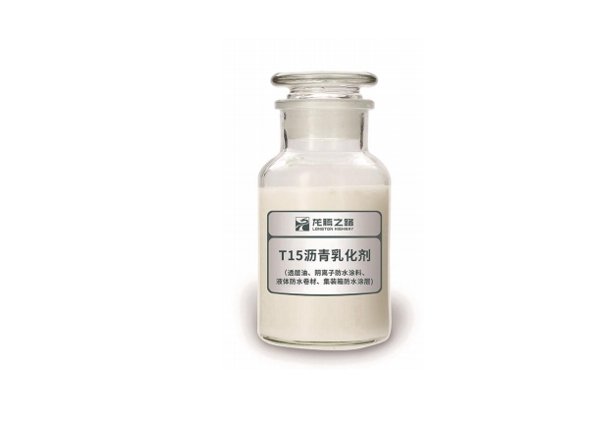1. Introduction to Anionic Asphalt Emulsifier
Anionic asphalt emulsifier is a surfactant that can make asphalt disperse in water to form a negatively charged (-) lotion, which is suitable for alkaline aggregates (such as limestone) or specific construction processes (such as micro surfacing, penetration pavement)。
Anionic asphalt emulsifier is a surface active substance that plays a key role in the production process of emulsified asphalt. It interacts with asphalt under specific process conditions to generate oil in water (O/W) liquid asphalt, also known as emulsified asphalt. Anionic asphalt emulsifiers have specific surface activity, which can disperse originally viscous asphalt into tiny droplets and stably suspend them in the aqueous phase, forming emulsified asphalt. Anionic asphalt emulsifier (T15) belongs to the category of anionic asphalt emulsifiers, which can emulsify not only ordinary asphalt but also SBS modified asphalt. It has high stability of calcium and magnesium ions and good compatibility with other polymer materials, organic and inorganic fillers.
2. Characteristics of anionic asphalt emulsifier
(1) Surface activity: It can decompose high viscosity asphalt into small droplets and stably suspend them in the aqueous phase, forming a uniform emulsified asphalt system.
(2) Good fluidity: Emulsified asphalt has good fluidity at room temperature, making it easy to construct and handle.
(3) Environmental protection and energy conservation: The production process does not require high temperature heating, reducing energy consumption and harmful substance emissions.
3. Usage method of anionic asphalt emulsifier
Heat the water to 60-70 ° C, add the pre measured asphalt emulsifier, stir and dissolve before use.
4. Main technical indicators of anionic asphalt emulsifier
(1) Appearance: Milky white paste like substance
(2) Active ingredient content: ≥ 50%
(3) PH value: 9.0-12
(4) Recommended dosage: emulsified base asphalt: 1.5-2.0%, emulsified SBS modified asphalt: 3-5%
(5) Packaging: 200kg/drum
5. Application scenarios of anionic asphalt emulsifier
(1) Permeable layer construction: Use an asphalt sprayer to evenly spray emulsified asphalt on the surface of the base layer, forming a permeable layer and improving the adhesion between the base layer and the surface layer.
(2) Adhesive layer construction: Before laying the new surface layer, spray a layer of emulsified asphalt as the adhesive layer to enhance the bonding between the new and old pavement structural layers.
(3) Gravel sealing layer: Emulsified asphalt and gravel are sprayed simultaneously on the base layer, and crushed by a roller to form a gravel sealing layer, improving the skid resistance and durability of the road surface.
(4) Slurry sealing layer: Mix emulsified asphalt, aggregate, filler, and water in a certain proportion to form a slurry mixture, spread it on the road surface, and form a strong and wear-resistant thin layer.
(5) Cold mixing and paving: Mix emulsified asphalt with aggregates, fillers, etc. at a lower temperature and spread them on the road surface, suitable for road construction under special conditions.
(6) Waterproof treatment: For areas that require waterproofing such as bridges, roofs, bathrooms, balconies, etc., the emulsified asphalt waterproof coating is evenly applied to the base layer using a brushing method to form a waterproof layer.
6. Construction precautions
(1) Material selection: Select appropriate emulsified asphalt types and emulsifiers according to engineering requirements to ensure construction quality and effectiveness.
(2) Grassroots treatment: Thoroughly clean and treat the base layer before construction to ensure that the surface is clean, dry, free of debris and floating dust.
(3) Construction temperature: The construction temperature for emulsified asphalt is generally required to be above 10 ℃, but not lower than 5 ℃. Measures should be taken to accelerate the demulsification speed during low-temperature construction.
(4) Spraying amount control: Accurately control the spraying amount of emulsified asphalt to avoid waste and accumulation.
(5) Rolling control: Based on material characteristics and construction conditions, the weight and rolling frequency of the roller should be reasonably set to avoid excessive or insufficient rolling.


